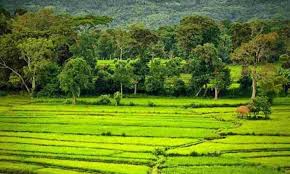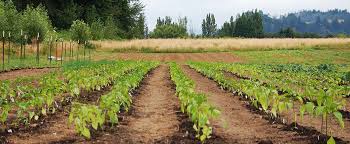This article focuses on the ecosystem. Its features and elements are unique and important to understand. The ecosystem is the contracted form of the ecological system.
The relationships or interactions existing amongst the different biotic components, as well as with abiotic components, form an ecological system.
Within the system, the biotic community cannot function independently, as abiotic components, directly or indirectly, are influenced by the activities of the biotic components.
The ecosystem may be defined as either an artificially created or natural article, consisting of biotic and abiotic factors. In real situations, natural articles are normally considered for various observations and studies.
These natural articles can be large or small, depending on prevailing conditions, natural occurrences, and availability of factors (living and non-living). These bear significant influence on natural articles and constitute marked differences observed therein.
As such, ecosystems differ in structure and status. These differences bear direct influence on the variety of biotic components it can support without collapsing.
As the biotic community depends on the abiotic resources found therein, the sustainability of the ecosystem depends on their population and level of interactions existing within.
Read Also : How to Plant Fruit Trees for Optimum Performance
Characteristics of An Ecosystem Relevant to Agriculture

There is much more to biodiversity than the number of species and kinds of ecosystems. The ecosystem exhibits three primary attributes: composition, structure, and function. Within each location, these attributes interact one with another.
1. Ecosystem components: These refer to the inhabiting species in all their variety and richness. The various flora and fauna occupy habitats with distinctive features, and to which they are best-fit. They provide genes for various and diverse interactions.
2. Ecosystem structure: It refers to the physical patterns of life forms which are different, relative to the ecological conditions of an area.
This could be described in terms of coastal, forest, or arid areas as shown by the type of vegetation and corresponding animal lives, beginning from the most delicate to the most complex in that habitat.
3. Ecosystem functions: Ecosystem functions are hard to see in action but the results can be felt. These among others include:
i. The biogeochemical cycles: These are essential for recycling useful environmental materials.
ii. The natural disturbances: These entail wildfires that release nutrients to the soil, weed out weak trees, and reset the succession clock. Other natural disturbances are the energy of falling water, which creates spawning beds for salmon even while it carves a mountain’s bones, and the release of oxygen into the atmosphere.
These ecological processes create landscapes and diverse environmental conditions out of life itself. These features are all interdependent and thus support biological diversity.
Read Also: Vaccination Program for Poultry Chickens
Key Elements Of A Functioning Agricultural Ecosystem

The functioning ecosystem has different elements which constitute its uniqueness. The uniqueness of a functioning ecosystem lies in the degree of diversity found in it. Biodiversity is so complex but has, as the most basic element, its genetic variation.
1. Genetic variation: Genetic variation occurs within individual populations and between populations of species. The variations observed reflect differences in their:
i. Physical characteristics
ii. Viability
iii. Productivity
iv. Resilience to stress
v. Adaptability to change
2. Distinct species: This term can be described in terms of their abundance or decline which most often attracts concern. Species such as American elk, rainbow trout, and ponderosa pine are in abundance.
Others like a woodpecker, Siler’s pincushion cactus, the Nigerian hippopotamus, manatee, crocodile, and others, have populations that are much reduced or which may even face extinction.
The reduction in specific species necessitates their conservation. This perpetuates native species in numbers and distributions that provide a high likelihood of continued existence.
3. Associations of species: Associations of species are often called biological communities. They are usually recognised as distinct stands, patches, or sites such as old-growth forests, riparian areas, or wetlands. These communities form the biotic parts of ecosystems.
The variety of species in an ecosystem is a function of its structural and functional characteristics, the diversity of its ecological processes, and the physical environment. These varieties are actively expressed as the elements or make-up of an ecosystem.
The Importance Of Ecosystem in Agricultural Biodiversity
The ecosystem bears a direct influence on biodiversity. Its functions, size, and structure determine the richness and variety of inhabiting species.
An alteration in the structure, size, and function affects, most times grievously, the biotic diversity within a location.
Do you have any questions, suggestions, or contributions? If so, please feel free to use the comment box below to share your thoughts. We also encourage you to kindly share this information with others who might benefit from it. Since we can’t reach everyone at once, we truly appreciate your help in spreading the word. Thank you so much for your support and for sharing!

